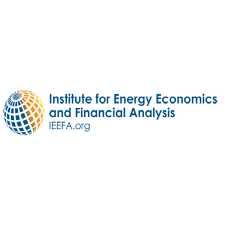Big Mining’s downstream steel emissions a new focus for shareholders

Rio Tinto and BHP can expect to face growing investor pressure to address their Scope 3 greenhouse gas emissions, according to a new report from the Institute for Energy Economics and Financial Analysis (IEEFA). Neither company has a measurable Scope 3 emissions reduction target.
While Scope 1 and 2 emissions occur as companies carry out their operations, a company’s Scope 3 emissions result from its customers’ use of its products, or from suppliers making products that a company uses. Given the emissions-intensive nature of blast furnace-based steelmaking, the resultant Scope 3 emissions for large, diversified miners that produce iron ore and metallurgical coal dwarf their Scope 1 and 2 emissions.
IEEFA’s report examined the emissions reduction ambitions of five mining companies that produce steelmaking raw materials: Rio Tinto, BHP, Fortescue, Vale and Anglo American. All five have announced goals to reach net zero emissions by 2050 as well as nearer-term, measurable emissions reduction targets, though not all include Scope 3 emissions in their goals and targets.
“Rio Tinto and BHP have no measurable Scope 3 emissions reduction targets,” says Simon Nicholas, IEEFA’s Lead Analyst, Global Steel and the report’s author. “In addition, Vale’s Scope 3 emissions reduction target will appear inadequate to an increasing number of investors.”
Pressure is growing for companies to do more to address their Scope 3 emissions. In July 2023, Sultan Al Jaber – president of COP28 and chief executive of the Abu Dhabi National Oil Company (Adnoc) – stated that companies must act to reduce all greenhouse gas emissions, including Scopes 1, 2 and 3. Going forward, investors will increasingly expect action and will demand measurable targets so they can judge a company’s performance in its reduction efforts.
“Investor pressure on Scope 3 emissions is growing. Recently, companies including TotalEnergies, Woodside, Glencore, ExxonMobil and Chevron have been pressured by investors to do more on their Scope 3 emissions,” says Nicholas.
Diversified miners often describe the steel industry as “hard-to-abate”, proffering this as a reason for such little action on their iron ore and metallurgical coal Scope 3 emissions in the past. However, it is becoming increasingly clear that the steel technology transition away from coal is accelerating. Funding and final investment decisions are now being made for direct reduced iron (DRI) installations, which do not use coal, at commercial scale. Industry leaders have conceded that the technology is moving faster than they had predicted.
“Technology transitions tend to be non-linear, and have a habit of happening faster than expected,” Nicholas adds. “Alternatives to coal-based steelmaking are now clearly viable and are attracting substantial investment. There is therefore no longer any excuse for suppliers of raw materials to the steel industry not to have a measurable Scope 3 emissions reduction target.”
With a target to reach net zero Scope 3 emissions by 2040, Fortescue clearly leads in ambition. The other major iron ore producers need to increase their intent to avoid investor pushback.
“BHP has noted that its transition risk increased during FY2023 due to growing societal expectations for decarbonisation by companies,” says Nicholas. “Now that BHP has joined Rio Tinto and Fortescue in examining steelmaking technology that can use Pilbara iron ore without metallurgical coal, the company has even less excuse not to have a measurable Scope 3 emissions target.
“Rio Tinto is committed to its Simandou iron ore project in Guinea, West Africa, which will see it increase its production of high-grade ore suitable for low-emissions steelmaking. The company’s own analysis finds that its iron ore-related Scope 3 emissions could drop 44% by 2035. Given all of this, investors will increasingly see that Rio Tinto is running out of reasons not to have a measurable Scope 3 emissions reduction target.
“Vale almost reached its 2035 target to reduce Scope 3 emissions by 15% in 2022, highlighting how unambitious it is. As the world’s leading producer of high-grade iron ore, Vale should be leading the iron ore majors on Scope 3 emissions. Investors will increasingly expect meaningful, as well as measurable, Scope 3 emissions reductions targets and to see more ambition upon Vale’s next review of its target in 2025.”
Read the report: Big Mining’s Downstream Steel Emissions – BHP and Rio Tinto Will Face Increasing Pressure from Investors on Scope 3 Targets






